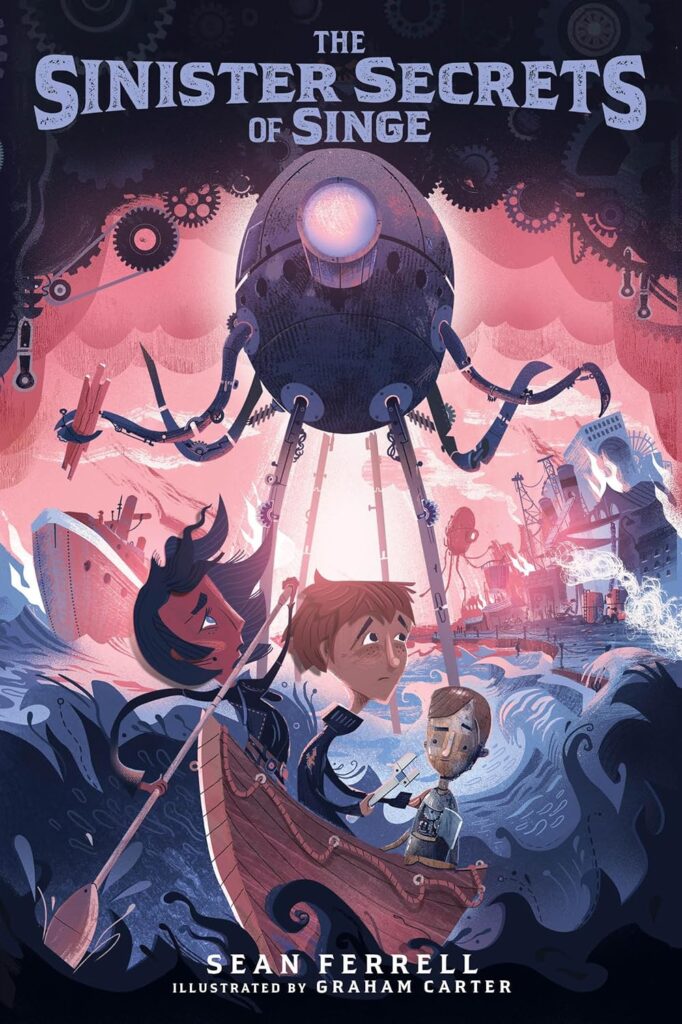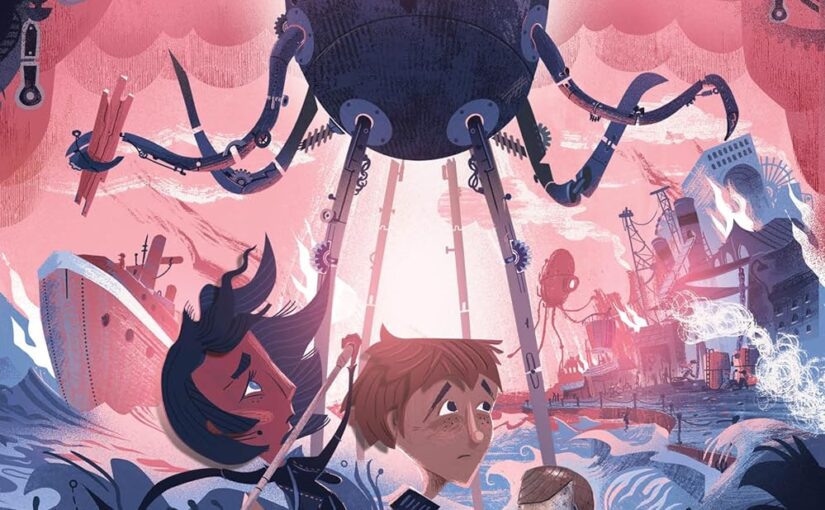The premise, as well as the hook in The Sinister Secrets of Singe, is very difficult to resist. There is a house that continues to grow, it literally gets larger and larger every night. There’s an 11-year-old kid, Noah, who lives there with his mother and their robot, who is size-wise the same age and stature as him. Noah’s job is to build things for the nearby city of Liberty, which he’s not allowed to visit. His mother keeps him under lock and key, under the watchful eye of Elijah, the robot. There’s so much to potentially love about The Sinister Secrets of Singe that it makes the fact that it didn’t pull it all together all the more frustrating.

The main reason that I didn’t find The Sinister Secrets of Singe entertaining was that it relied on a trope that I simply can’t stand anymore. The missing father. It’s not that it’s the father per se, it’s the missing parent, the search for a parental figure that will answer question X or put the child’s life journey on the correct path. This is an unforgivable trope that lives next to a parent’s untimely death in the superhero’s arc. I understand that many mglit readers have relationships with their parents that might be strained or mysterious, but I need a break from these books and I suspect that many upper elementary and middle school readers are with me.
Noah and his nuclear family find that they have to leave their growing house. As they enter Liberty he’s bemused at the fact that the town’s people are pointing to him, the kids are singing limericks that have his mother’s name in them, the buildings in town are all growing and there’s a deep sense of paranoia. They meet with the governor and the middle arc quest to Singe starts in earnest.
The three make their way towards this island that holds many secrets to the problems happening in the city, and just possibly Noah’s non-deceased father. The island has more secrets, as well as, a couple of answers and the trio returns to Liberty to hopefully save it from the robotic plight that’s headed its way.
There are some decent action sequences in The Sinister Secrets of Singe. The trio making their way to the island, in addition to when they’re there, has ample opportunity for conflict and steampunk fun. It’s just that the action is broken up by too much drama and in some cases, back story. This is exacerbated by the fact that the chapters are too long. Most chapters are around 20 pages long and while mglit doesn’t need to have shorter chapters, they do help maintain a taut story and reader’s interests. By having the chapters at this length readers will get frustrated at the pacing of Noah’s episodes and not pay as much attention to the text if they were marginally shorter.
It could also be a case of building the world before they established its footing. There’s a big “1” on the spine of the book as if it’s laying claim to a book series. Something is interesting in this book’s world and The Sinister Secrets of Singe lets readers know that it’s there, but doesn’t really allow the fun and it enjoyment that it could’ve been out of the bag. A series of sequels that happen in this book’s world isn’t out of the question; it would just take more humor, brevity in conversation, truncated action sequences and a greater evil for it to really take root in the imagination of mglit readers.
Even when Noah’s desire to find his possibly not-deceased father became the driving thread for the book I stayed with it.
The Sinister Secrets of Singe is by Sean Ferrell with illustrations by Graham Carter and is available on Pixel and Ink Books, and imprint of TGM Development Corp.
There are affiliate links in this post.





 Facebook
Facebook Twitter
Twitter Flickr
Flickr GooglePlus
GooglePlus Youtube
Youtube